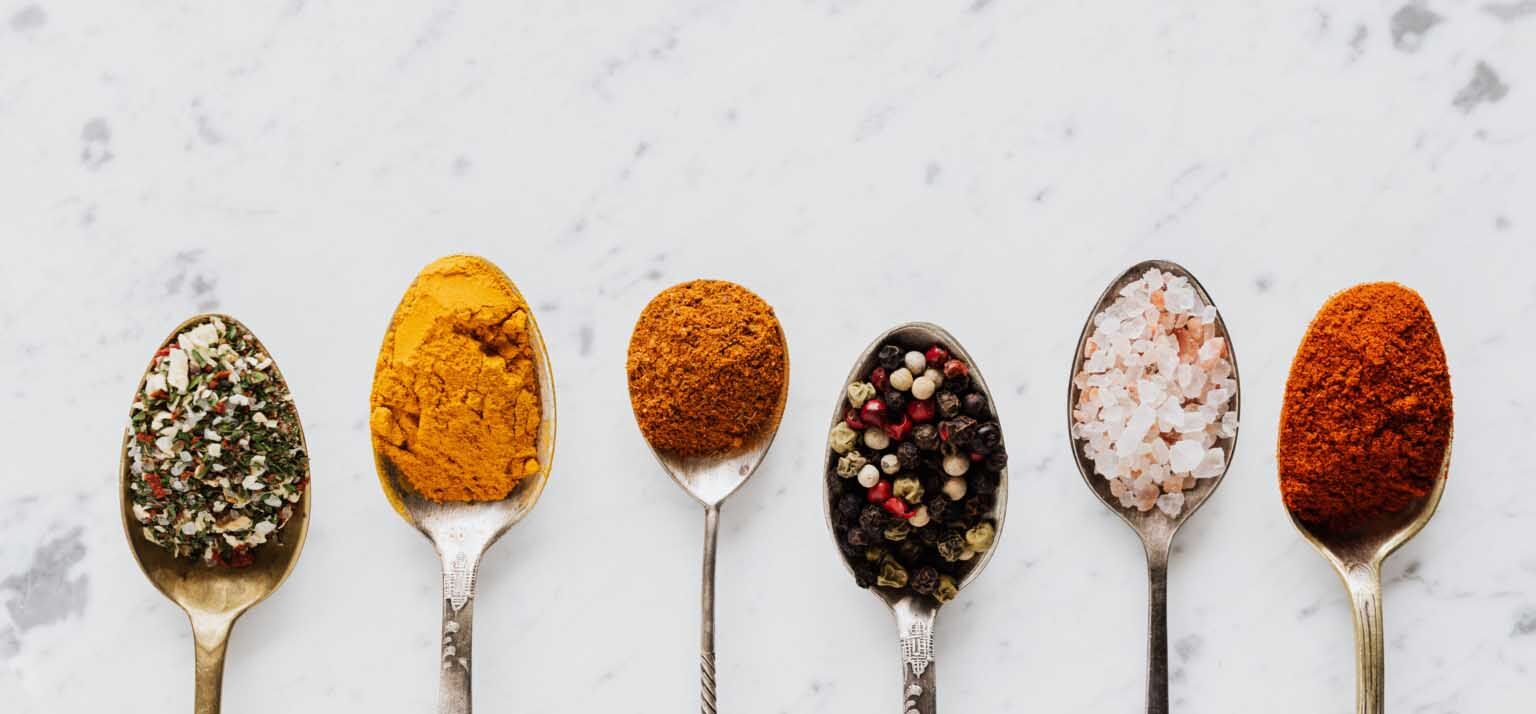Throughout history, spices have held a special place in the lives of people from various corners of the world. They’ve been an integral part of our culture, serving dual roles as both ingredients in delicious dishes and remedies for various ailments. For generations, humans have turned to herbs and spices not only to add flavour to their meals but also to address health concerns. These incredible plants contain biomolecules that contribute significantly to our well-being. Their versatility is astounding, also playing roles as colouring agents, flavour enhancers, preservatives, food additives, and even medicine throughout history.
The secret lies in the active phytochemicals found within these spices, forming the molecular foundation for their various uses. From easing digestive discomfort to promoting respiratory health, and even supporting detoxification, spices have found their way into our daily lives in more ways than we might realize.
Think about it: turmeric, fenugreek, mustard, ginger, onion, and garlic, to name just a few, each offer a diverse array of health benefits. What’s truly remarkable is how these spices often work together in harmony, providing us with a shield against a wide range of health challenges.
From ancient times right up to today, spices continue to play a pivotal role in our lives, not just in our culinary adventures but in our holistic approach to well-being. So, the next time you sprinkle some spices into your favourite dish, remember that you’re not just adding flavour; you’re embracing a tradition that has contributed to our health and happiness for centuries. The table below dives into the wonderful world of spices, their uses and benefits.
| Spices | Uses | Benefits |
| Bay leaf (Tez Patta) | It is used in cooking to add a specific flavour to food. It also has some medicinal properties. | Bay leaf oil possesses antifungal and antibacterial properties. |
| Cardamom (Elaichi) | Mostly in all Indian and other sweet dishes it used to give a good flavour and smell. It is also used widely in the pharmaceutical sector. | Helps to control bad breath and digestive disorder. A whole cardamom chewed is good for coping with diabetes. |
| Cinnamon (Dalchini) | It is used mainly for seasoning food and preparing masala. It has medicinal uses too. | It supports natural production of insulin and reduces blood cholesterol. |
| Clove (Laung) | It is used as a cooking ingredient mainly for seasoning or preparing Masalas. | Clove oil is beneficial for coping with toothache and sore gums. It is also a beneficial remedy for chest pains, fever, digestive problems, cough and cold. |
| Coriander (Dhaniya) | Coriander leaves as well as coriander seeds are used in cooking. It also has some medicinal uses. | It can be used externally on aching joints and rheumatism. It is also good for coping with sore throat, allergies, digestion problems, hay fever etc. |
| Cumin (Zeera) | It is used for cooking, and it also possesses medicinal properties. | It is a good source of iron and keeps the immune system healthy. Water boiled with cumin seeds is good for coping with dysentery. |
| Garlic (Lassan) | It is used for cooking as well as for medicinal purposes. | It is useful for coping with coughs and colds. It also has antibiotic properties. |
| Ginger (Adrak) | It is used for giving a specific flavour to food and has many medicinal uses. | Helps to avoid digestive problems. It is beneficial for coping with coughs and colds. |
| Mustard (Rye) | It is used for seasoning as well as green leafy vegetables. The use of mustard oil is extensive in India, but is banned in some countries. | Mustard oil is good for body massage and even for getting good hair. It consists of omega-3 fatty acids. It is an excellent source of iron, zinc, manganese, calcium, protein etc. |
| Star anise (Chakra Phool) | It is used in cooking and for medicinal purposes. | Star anise oil is beneficial for rheumatism. It is helpful for digestion and avoiding bad breath. |
| Turmeric (Haldi) | It is used in cooking and skin care products. It has a wide range of medicinal uses. | It helps deal with skin problems. Turmeric powder can be used for healing cuts and wounds. It also makes coping with diabetes easier. |
Traditionally, spices have been an essential part of our diets, and they bring a holistic touch to our meals. Despite their robust flavours, spices are often used in small quantities, which means they don’t add many calories to our food. But here’s the exciting part: even in those small amounts, many spices, especially those made from seeds, are packed with goodness like fat, protein, and carbohydrates.
Now, here’s where it gets interesting. When you decide to go all out with your spices and use them generously, they can become a source of essential minerals and other micronutrients. Think iron, magnesium, calcium, and a whole bunch of others that are like little treasures for your diet.
So, whether you sprinkle them lightly or go all-in, spices not only add a burst of flavour but also bring a dose of nutrition to the table.Talk about dynamite coming in small packages!

